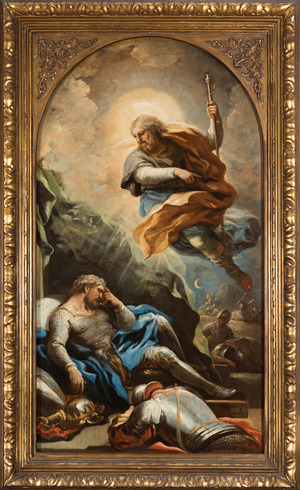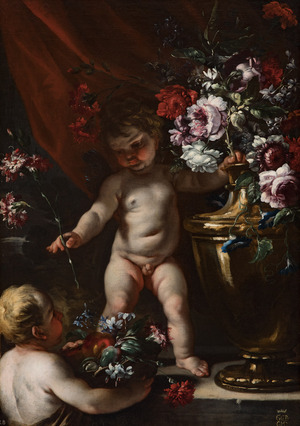Masters in Naples around 1700
The name of the city of Naples has been resonating for almost three thousand years, and for good reason it is one of the oldest and most cultural in the world. From Greeks, to Etruscans and Romans among others, its inhabitants left a mark that lasts today. This scenario was the perfect one for the development of an art like in few other places. Despite the convulsive years of epidemics, wars and political changes between Spaniards, Italians and Austrians, Naples seemed to want to show the world its prestige through the splendor of art and patronage.
The city welcomed painters of the stature of Ribera, Caravaggio, Pretti, Stanzione and a long list of masters who left their mark on churches and palaces. These works would mark future generations of Neapolitan artists. One of the most fruitful and of greatest genius was undoubtedly Luca Giordano.
Educated in the workshop of Ribera, who would deeply mark his style, he knew how to advance by combining others and styles from the classicist to the Venetian exuberance. The speed with which he executed his works, the originality in creating models and the diligence in his work made him one of the most important figures of his time. In the next auction on June 22, Setdart offers an extraordinary work of “fa presto”. The panel has a finish that indicates that it was probably used as a Tabernacle door, however, its quality even in the most sketchy details gives the impression that it could even be the sketch for a large-format altarpiece.
The next protagonist on the Neapolitan scene is Francesco Solimena. Related to Giordano I ended up being deeply influenced by Pretti. His characteristic style made him very popular without hardly leaving his hometown. One of his most prominent patrons was the then king of the two Sicilies, Don Carlos de Borbón, the future Carlos III of Spain. It is worth noting that the work we are presenting is very likely the pair of the one belonging to the Prado Museum collection and that it would be one of the paintings that the king would bring with him after his departure from Italian lands. Currently on display at the San Telmo Museum in San Sebastián.
The painting we are talking about has another interesting feature and it is the intervention of the hand of another artist, Andrea Belvedere. The beginning of the 18th century welcomed a large group of painters specialized in still lifes and flower compositions, personalities such as Belvedere, Baldarre de Caro, the Reccos or Gasparo López.
The artistic focus of Naples never faded even into the 18th century, as shown by other later masters. However, it must be added that the figures of Giordano and Solimena collected much of the city’s tradition behind them, they were one of the the highest points of its history and of course would mark a school in the coming centuries throughout Europe.







